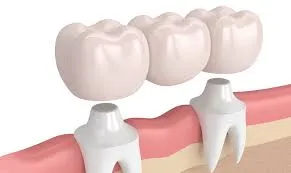How Crowns Can Save Your Teeth from Further Damage

Dental crowns are a commonly recommended solution in restorative dentistry. They play a significant role in protecting and preserving the functionality of damaged teeth. Whether you’ve dealt with tooth decay, fractures, or other dental issues, crowns might provide an effective solution. Here is more information on these dental devices, their benefits, and the process involved in getting one:
What Are Crowns?
A dental crown is a cap that fits over a damaged tooth to restore its shape, size, and function. Made from materials like porcelain, ceramic, metal, or a combination of these, crowns are custom-designed to match your teeth. Dentists use them to cover and protect weakened teeth while maintaining a natural appearance.
Crowns entirely encase the visible portion of a tooth, offering structural reinforcement. They can strengthen teeth that are at risk of further damage while enabling you to eat and speak without discomfort. Consulting a professional helps determine if this option is right for you.
Who Could Benefit From Crowns?
Crowns are often used in a variety of restorative dental treatments. Individuals whose teeth are significantly weakened or damaged may find them especially helpful. Those dealing with large cavities that cannot be treated with traditional fillings may benefit from the added support crowns provide.
These dental devices are also suitable for patients with cracked or fractured teeth, as well as those who have undergone root canal treatment. They may be used in conjunction with dental implants or bridges to replace missing teeth. Anyone needing to restore the functionality and strength of a tooth might benefit from a crown.
How Do Crowns Prevent Further Damage?
By completely encasing a tooth, crowns provide a protective barrier against external forces. Teeth weakened by decay, fractures, or wear can deteriorate over time without proper restoration. Crowns act as a safeguard, preventing further breakage or structural weakening caused by chewing, grinding, or biting.
Crowns protect teeth from exposure to harmful bacteria, which may cause decay or infections if left untreated. For patients recovering from procedures like root canals, crowns shield the treated tooth while aiding its long-term durability. The ability of crowns to distribute bite pressure evenly across all teeth also reduces strain on individual teeth, further lowering the chances of future damage.
What Does the Process Involve?
The process of getting a crown typically involves two dental visits. During the first appointment, the dentist prepares the tooth by removing any damaged or decayed portions. The tooth is reshaped to create space for the crown, and an impression is taken to aid a precise fit.
The impression is sent to a lab where the permanent crown is custom-made. While waiting for the final crown, a temporary one is placed to protect the tooth. Once the permanent crown is ready, the second appointment involves fitting and securing it onto the tooth using dental cement or adhesive. Patients can then resume normal activities with proper care to foster the longevity of the crown.
Seek Professional Guidance Today
Dental crowns are a proven solution for restoring and protecting damaged teeth. They enhance both functionality and appearance while reducing the risk of further issues. If you think a crown might be the right option, consult a dental professional. They can evaluate your specific needs and provide expert guidance.





